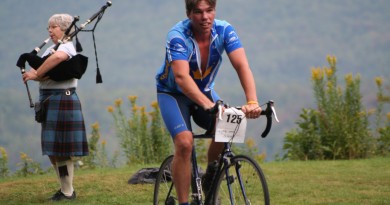Common Nordic Skiing Injuries, and How To Mitigate Them | Sports Medicine Feb-Mar 2012
Staying healthy while Nordic skiing and training can be challenging. While Nordic skiing can be considered by some people, such as myself, to be the perfect low-impact total body fitness—and fun —sport, it can lead to some injuries and problems if not approached sensibly. These injuries can be categorized into several areas, and specific preparation can minimize their potential damage.
-
Training and overuse injuries. These can be mitigated by varying dry-land exercises, cross-training, changing footwear, and increasing volume by 10 to 15 percent per year or less. Once on snow, resist the urge to blast out on the trails with nine months pent up enthusiasm. Putting in a solid foundation of no pole work every workout for the first few weeks has not only helped my balance, but emphasized the relaxed pause between explosive strides and polling that prevents overuse, over-extension, stress/strain injuries likely to occur when grasping those poles with the death grip.
-
Thermal injuries. Exposed skin is always at risk, but injury is preventable. I never ski without an arctic nose and cheek protector ($1 at Spruce Mountain Surplus) and earmuffs in my pockets. Warm, windproof gloves or mittens without holes can make that car ride home less painful. Wind-paneled underwear or an extra sock on cold days is advisable.
-
Breathing-related injuries. The cold air taken in volumes over long periods can irritate the lungs and lead to a cold and exercise-induced bronchospasm, a type of asthma. One study showed a 43 percent incidence among elite cross-country skiers. This can be identified by a distinctive cough once the workout is done, which frequently last for a half hour. It is effectively treated with a preexercise inhaler, and possibly daily inhaled steroid over the ski season. Spouses appreciate the quiet. Trust me, I know.
-
Skier’s thumb. Most cross-country ski injuries will come from falls, and the most common injury is skier’s thumb. When the hand hits the ground holding a pole, the thumb is swept back to the palmer wrist area. The ligament that stabilizes the thumb at the second joint can pull off the proximal phalanx (a bone in the thumb) with such recoil that it flips behind the adductor muscle and won’t heal properly without surgery. This “Stener lesion” will cause asymmetric swelling on the index finger side of the second thumb joint. Any supposed sprain in this area should be examined by a professional, and stress X-rays are very helpful in confirming the diagnosis and the need for surgical as opposed to casting or splinting treatment. If left untreated, pain and difficulty grasping, holding, pinching, and writing can be the result. Other winter sports can lead to this injury as well. My own surgical repair followed a tobogganing accident. Once this lesion is identified and treated, one can anticipate resuming all activities. So if you know you are about to crash, relax, let go of the poles, and go with the flow.
Happy Trails.


